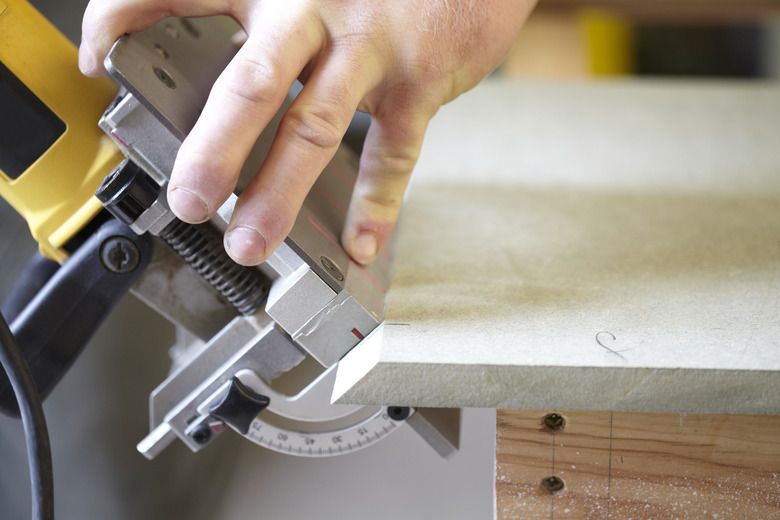How To Join MDF
We may receive a commission on purchases made from links.
Available in plywood-size sheets of various thickness, medium-density fiberboard (MDF) is fabricated by compressing wood fibers with an adhesive. MDF is like particleboard, but the fibers are much smaller — basically the size of dust — so the final product is denser and more stable. Designed for interior use, MDF is commonly made into cabinets, tables, shelves, and other home furnishings.
Almost every MDF project involves joining pieces together, and this isn't quite as straightforward as it is for wood or plywood. You should never, ever try to drive nails into it with a hammer, and MDF can chip out when you drive screws, especially when they are too close to the edge. That doesn't mean you can't use screws, but you need to take more precautions than you do with other materials. When it comes to joining pieces end to end, splines and biscuits work best.
Here are the best methods for joining MDF.
Corner Joints With Screws
Corner Joints With Screws
When you're making a corner joint, such as you would for a box, the glue-and-screw method is the old standby. Deep-threaded screws will hold the material better than shallow threads, and their length should be at least twice the thickness of the material. The screws should be driven straight down through the top sheet into the butt end of the one underneath.
- Drill a pilot hole for each screw in the top sheet and countersink the hole to prevent the head from chipping the MDF when you sink the screw.
- Spread wood glue on the butt end of the bottom sheet, join the sheets (preferably using bar clamps to hold them), and continue each pilot hole into the bottom sheet to a depth equal to the length of the screw.
- Drive the screw tightly enough to make glue ooze out from the joint and then clean off the excess and wait for the glue to set.
Butt Joints With Splines
Butt Joints With Splines
When you join pieces end to end to make a larger piece, you could always cheat and screw straps to the side that won't be seen, but that won't make a tight joint. A better way is to cut grooves in the ends of both pieces, glue in a tight-fitting spline, and clamp the pieces together until the glue dries.
The safest way to cut the grooves is to use a router with a grooving bit. You can cut the spline on your table saw out of MDF, but if you make the spline from wood or plywood, it will make a stronger joint. The spline should be slightly less wide than the combined depths of the two grooves to make sure the sheets mate. Spread glue on one side of the spline, insert it in the groove of one sheet, spread glue inside the groove of the other sheet, and then spread more glue on the ends of both sheets. Tap the sheets together, clamp them with bar clamps, and wait for the glue to set.
You Can Also Use a Biscuit Joiner
You Can Also Use a Biscuit Joiner
Biscuits are oval-shaped hardwood chips that substitute for splines, and you can use them to make corner joints and butt joints. You also need a biscuit joiner, which is a tool similar to a router that cuts biscuit-shaped grooves to the proper depth. The biscuits and joiner are usually supplied as a kit.
When making butt joints, you use a biscuit joiner the same way you would a router, cutting grooves in both butt ends at regular intervals. You then spread glue on the biscuits, insert them in the grooves, clamp the pieces together, and wait for the glue to set. When making corner joints, you use the biscuit joiner to cut grooves in the underside of the top sheet and the butt end of the lower one. Glue in the biscuits, clamp the joint, and let the glue set.
